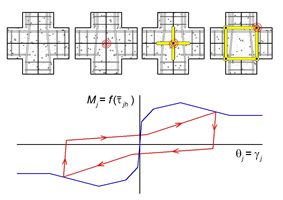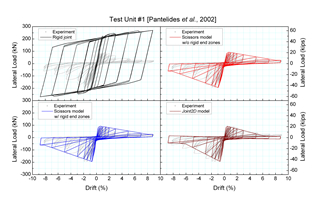Celik OC and Ellingwood BR [2008] Modeling Beam-Column Joints in Fragility Assessment of Gravity Load Designed Reinforced Concrete Frames, Journal of Earthquake Engineering, 12(3): 357381.
Reinforced concrete (RC) frame structures customarily have been designed in regions of low-to-moderate seismicity with little or no consideration of their seismic resistance. The move toward performance-based seismic engineering requires accurate reliability-based structural analysis models of gravity load designed (GLD) RC frames for predicting their behavior under seismic effects and for developing seismic fragilities that can be used as a basis for risk-informed decision-making. This analytical approach requires particular attention to the modeling of beam-column joints, where GLD frames differ significantly from their counterparts in high-seismic areas. This paper focuses on modeling shear and bond-slip behavior of beam-column joints for purposes of seismic fragility analysis of GLD RC frames. The joint panel constitutive parameters are defined to replicate the experimental joint shear stress-strain relationships, while the effect of bond-slip is taken into account through a reduced envelope for the joint shear stress-strain relationship. The joint model is validated using two full-scale experimental RC beam-column joint test series. A fragility assessment of an existing three-story GLD RC frame reveals the importance of modeling shear, anchorage and bond-slip in joints of GLD frames accurately when performing seismic risk assessments of buildings.

